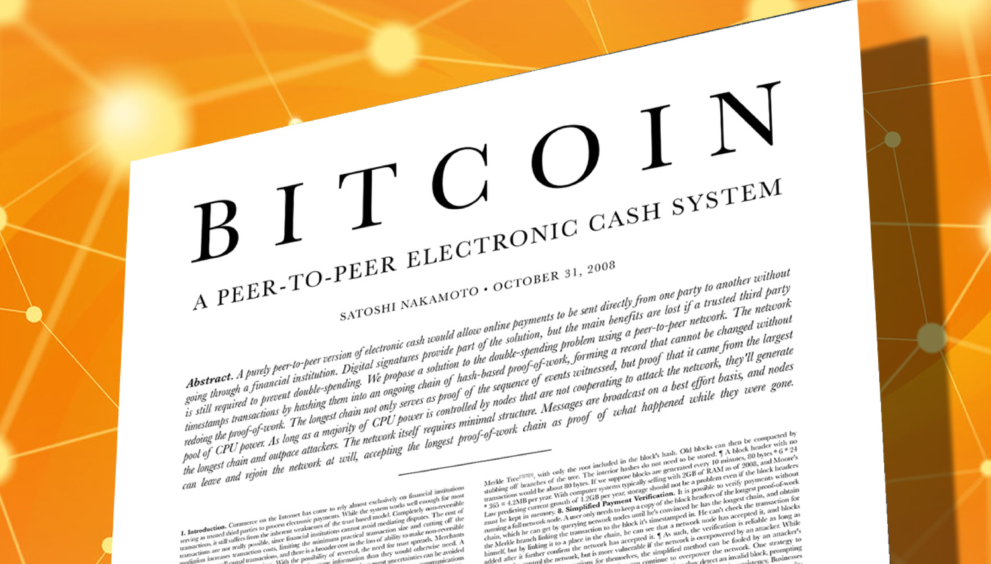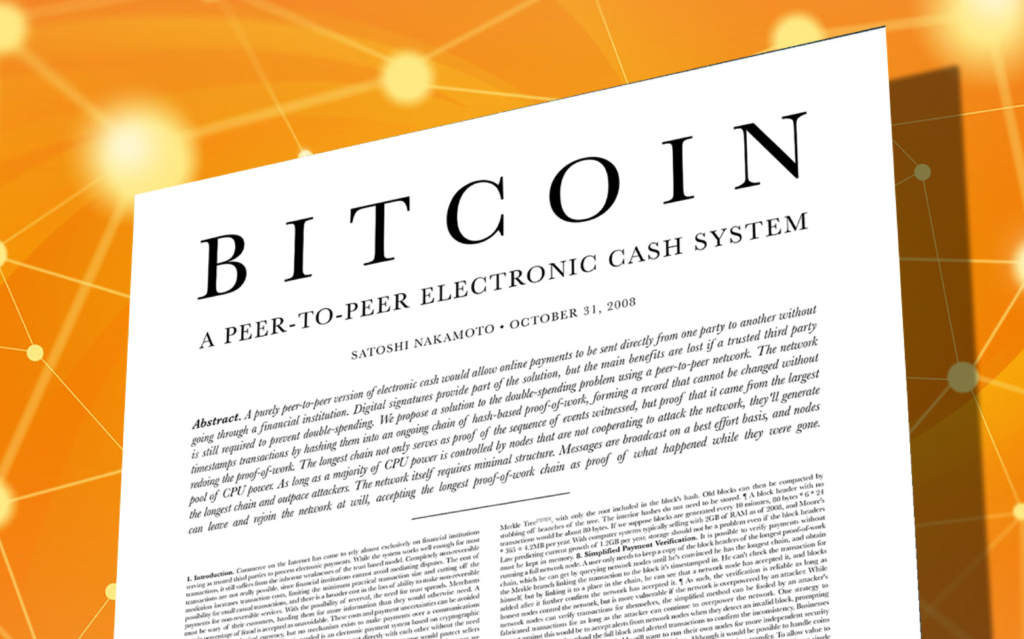The Bitcoin White Paper: Unveiling the Foundation of a Financial Revolution

In 2008, a pseudonymous individual or group of individuals known as Satoshi Nakamoto introduced the world to a groundbreaking concept: a decentralized digital currency called Bitcoin. This revolutionary invention was accompanied by a detailed technical document, commonly referred to as the Bitcoin White Paper. Considered the foundation of the cryptocurrency movement, the white paper outlined the fundamental principles and mechanisms that underpin Bitcoin’s operation. In this article, we delve into the significance of the Bitcoin White Paper and its lasting impact on the financial landscape.
-
The Birth of a Vision:
The Bitcoin White Paper, titled “Bitcoin: A Peer-to-Peer Electronic Cash System,” was published by Satoshi Nakamoto on October 31, 2008. It emerged during a time of financial turmoil and discontent with traditional centralized financial systems. Nakamoto’s vision was to create a digital currency that would be independent of any government or central authority, allowing individuals to transact directly with one another, securely and transparently.
-
Decentralization and Trustless Transactions:
At the core of the Bitcoin White Paper lies the concept of decentralization. Nakamoto proposed a network where transactions are verified and recorded by a distributed network of computers, called nodes, rather than relying on a central authority. This decentralized approach not only eliminated the need for intermediaries such as banks but also prevented the risk of a single point of failure.
The white paper introduced the concept of a blockchain, a public ledger that records all Bitcoin transactions in a chronological order. By employing cryptography, participants in the network could verify and validate transactions without the need for trust between parties. This trustless system paved the way for the creation of a secure and efficient peer-to-peer electronic cash system.
-
Proof-of-Work and Mining:
To ensure the integrity of the Bitcoin network, the white paper proposed the use of a consensus mechanism called Proof-of-Work (PoW). Miners, participants in the network, compete to solve complex mathematical problems, thereby validating and securing transactions. The first miner to solve the problem is rewarded with newly minted Bitcoins, incentivizing participation and maintaining the security of the network.
-
Limited Supply and Halving:
Another significant aspect of the Bitcoin White Paper is the concept of a limited supply of Bitcoins. Nakamoto specified that there would only ever be 21 million Bitcoins in existence, creating scarcity and a store of value. Additionally, the white paper introduced the concept of Bitcoin halving, an event that occurs approximately every four years, reducing the block reward given to miners by half. This mechanism ensures a controlled and predictable issuance of new Bitcoins until the maximum supply is reached.
-
Impact on the Financial Landscape:
Since the release of the Bitcoin White Paper, the implications and impact of its ideas have reverberated throughout the financial world. Bitcoin has inspired the creation of thousands of other cryptocurrencies and laid the foundation for the broader adoption of blockchain technology. It has challenged traditional financial institutions, prompting discussions on the future of money, central banking, and monetary policy.
Bitcoin has gained recognition as a digital asset class, with growing acceptance from institutional investors and major companies. Its decentralized nature provides individuals with greater control over their finances and the ability to engage in borderless transactions with reduced fees and friction. The Bitcoin White Paper’s influence has extended far beyond the realm of finance, igniting conversations about decentralization, privacy, and the democratization of financial services.
Conclusion:
The Bitcoin White Paper, authored by the enigmatic Satoshi Nakamoto, introduced a vision for a decentralized digital currency that has since revolutionized the financial landscape. Its core principles of decentralization, trustless transactions, limited supply, and cryptographic security have paved the way for the development of blockchain technology and countless other cryptocurrencies. As we continue to
CryptOctopus
Dive into the oceanic world of Inky, the fintech-savvy octopus. Having discovered a sunken treasure chest filled with Bitcoin hardware wallets, Inky ventured into the world of cryptocurrencies, becoming a self-taught expert. With a 360-degree vision for market trends, exclusive OctoTrade Signals transmitted via ink-sprays, and Cephalo-Consulting services, Inky offers a unique blend of underwater wit and fintech expertise. A fan of marine-themed altcoins like PoseidonDAO and SeashellCoin, Inky also enjoys underwater chess and squid-wrestling when he’s not busy with crypto. Connect with Inky by dropping a message in a bottle and setting it adrift on the high seas. He’s always ready to lend a tentacle or two!













































































































































